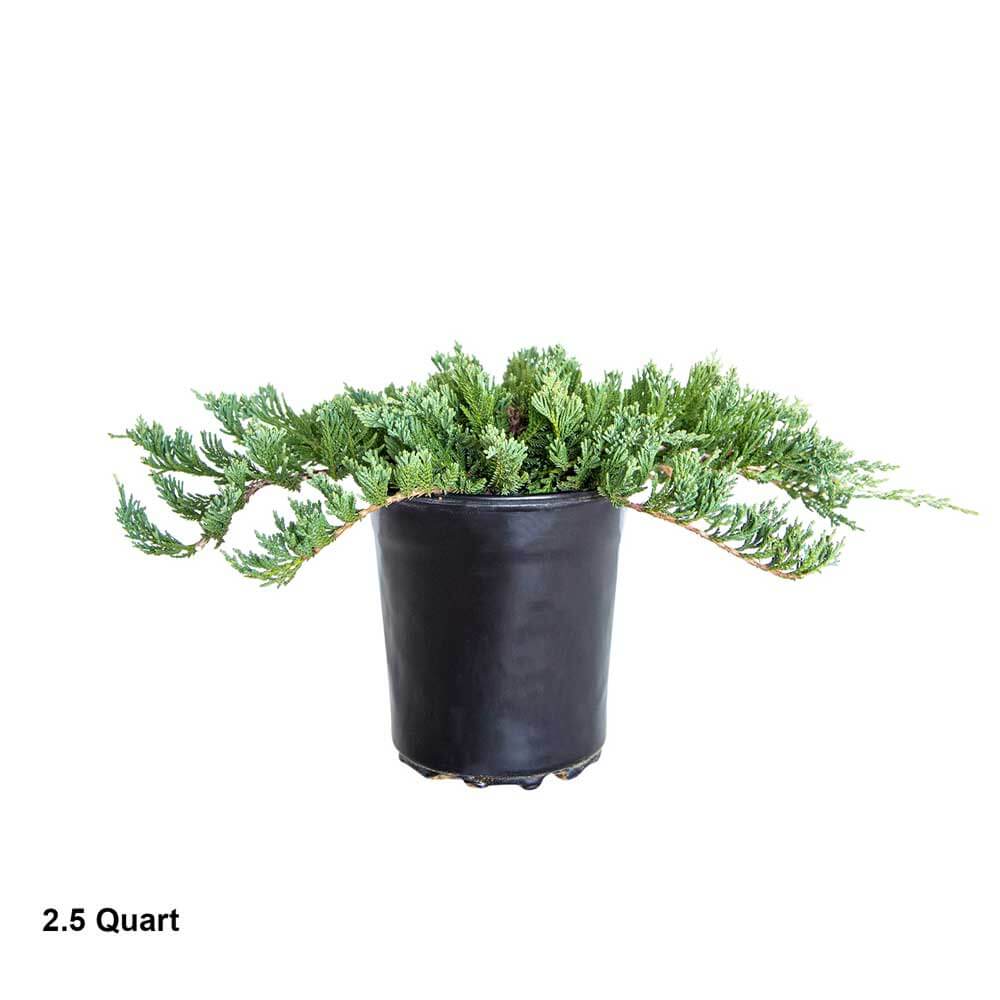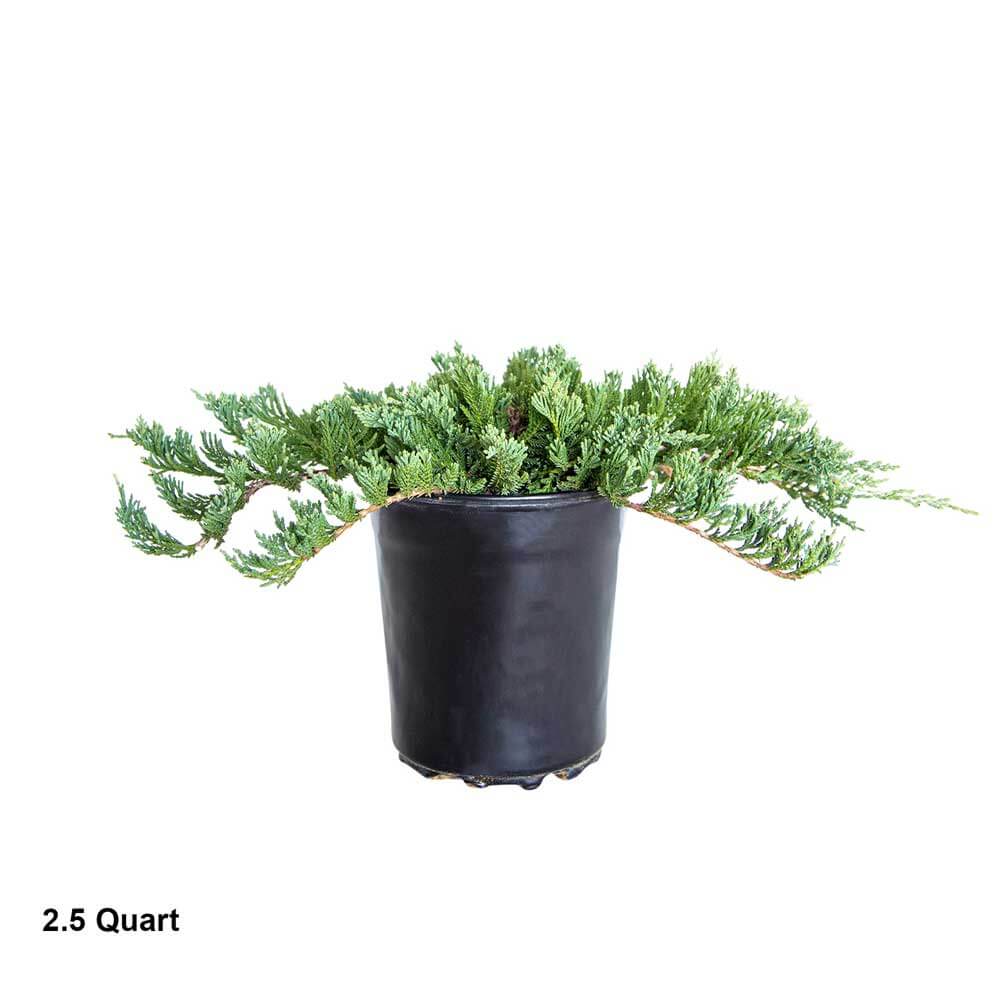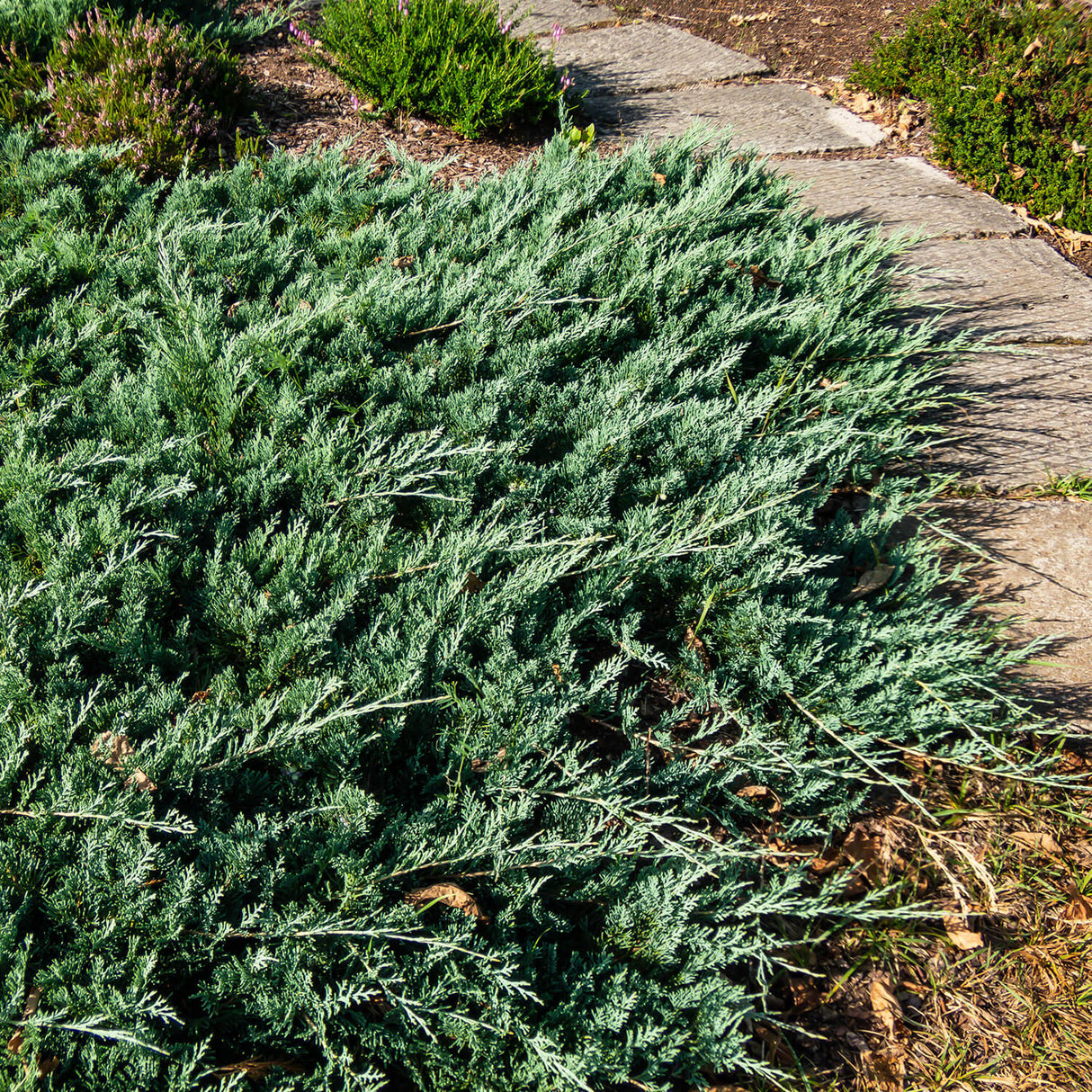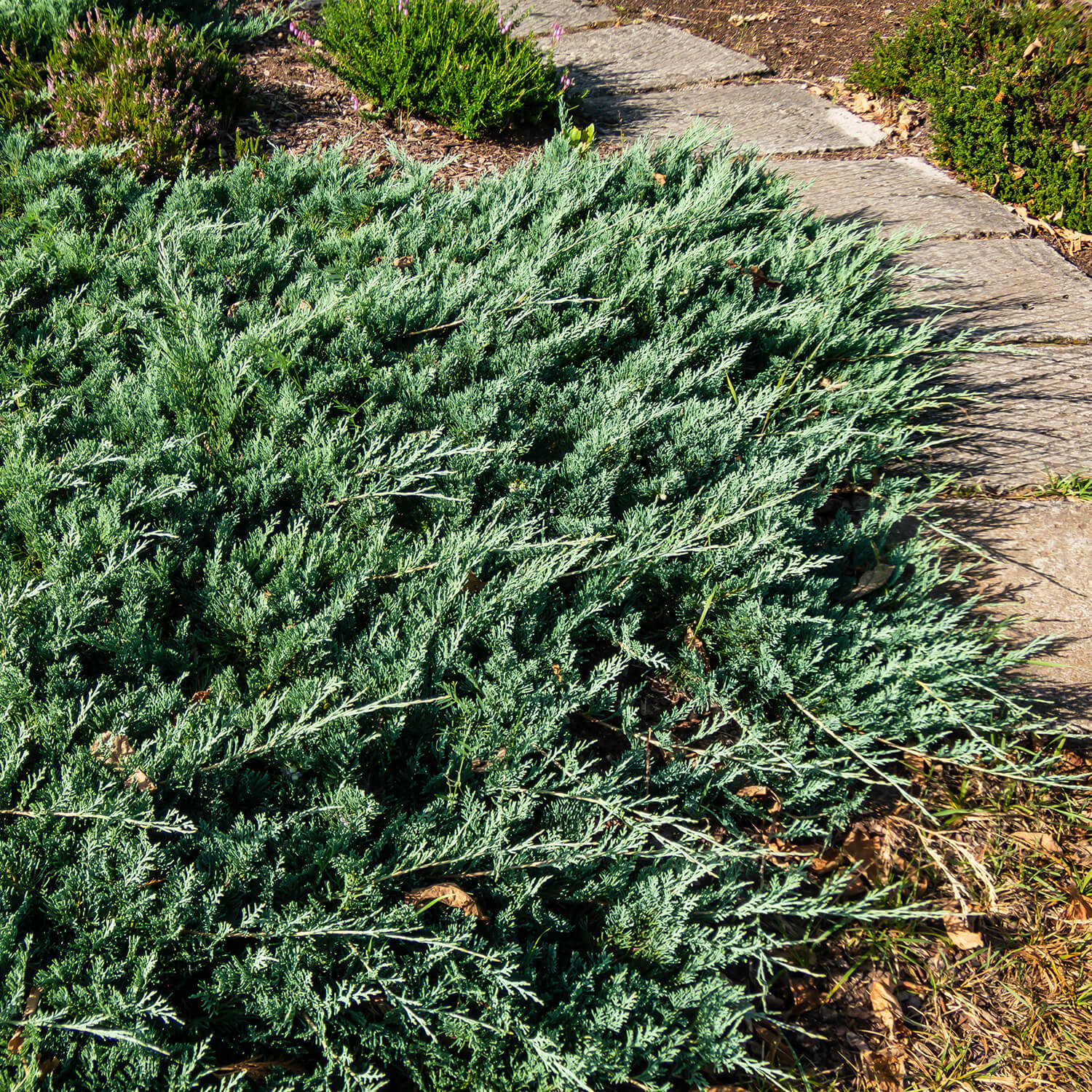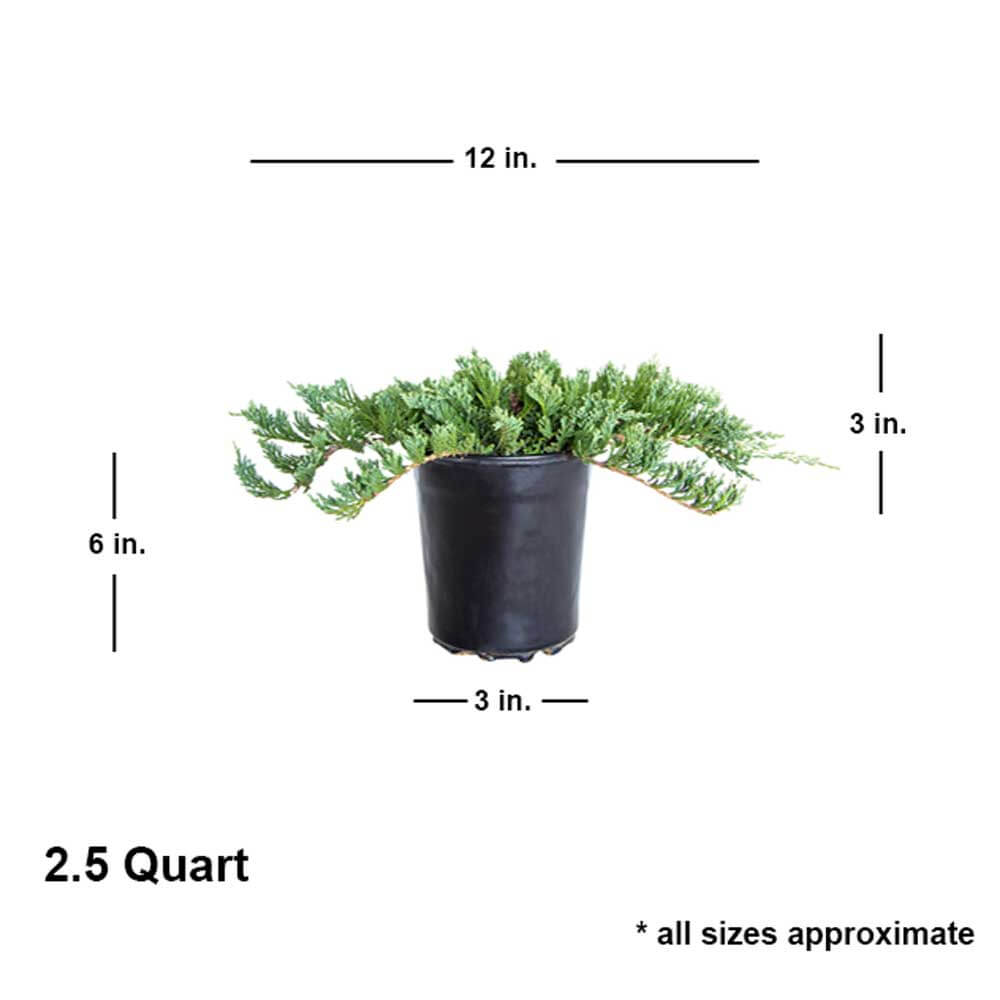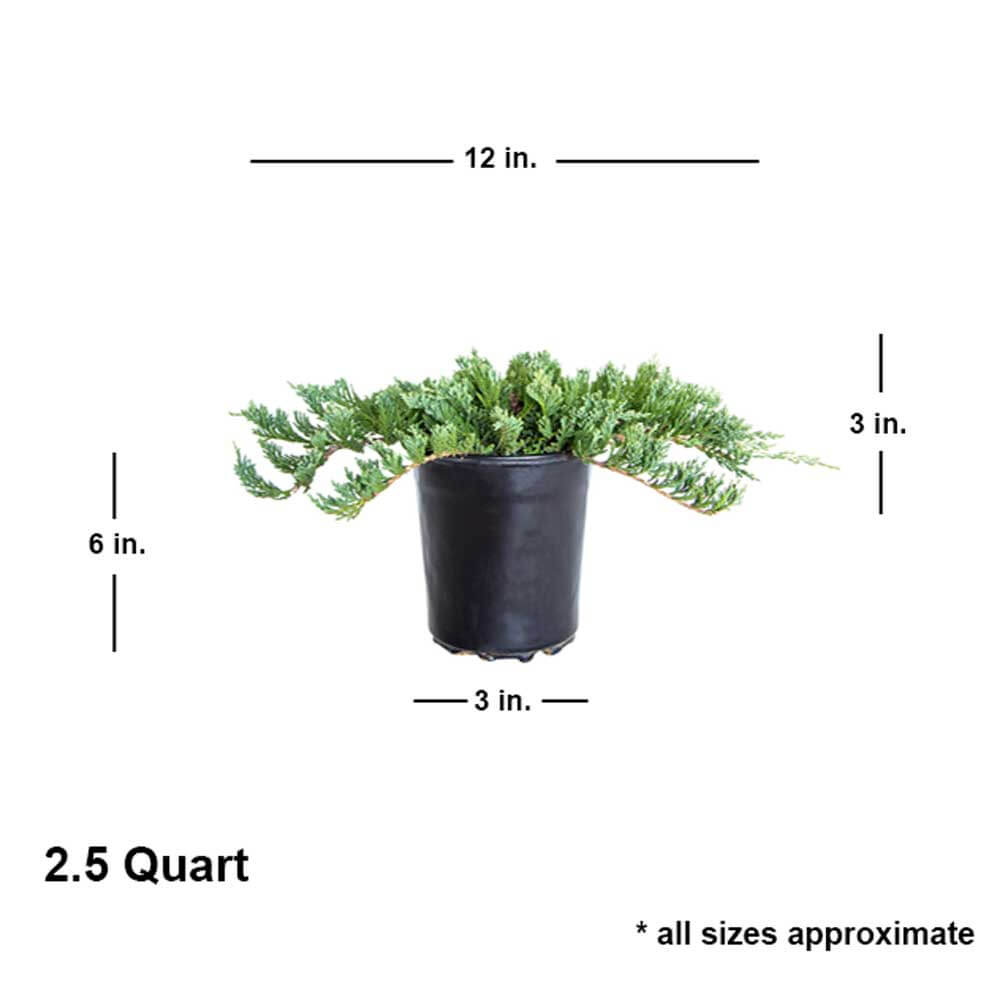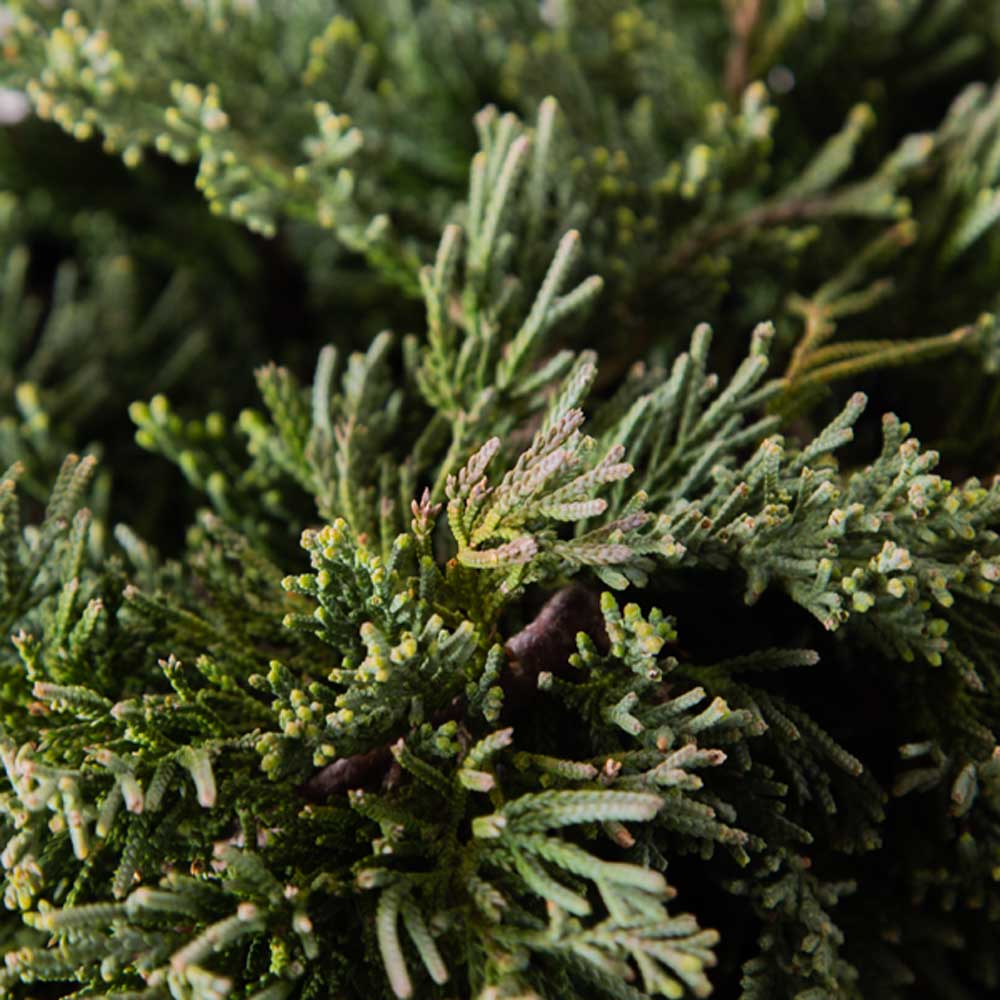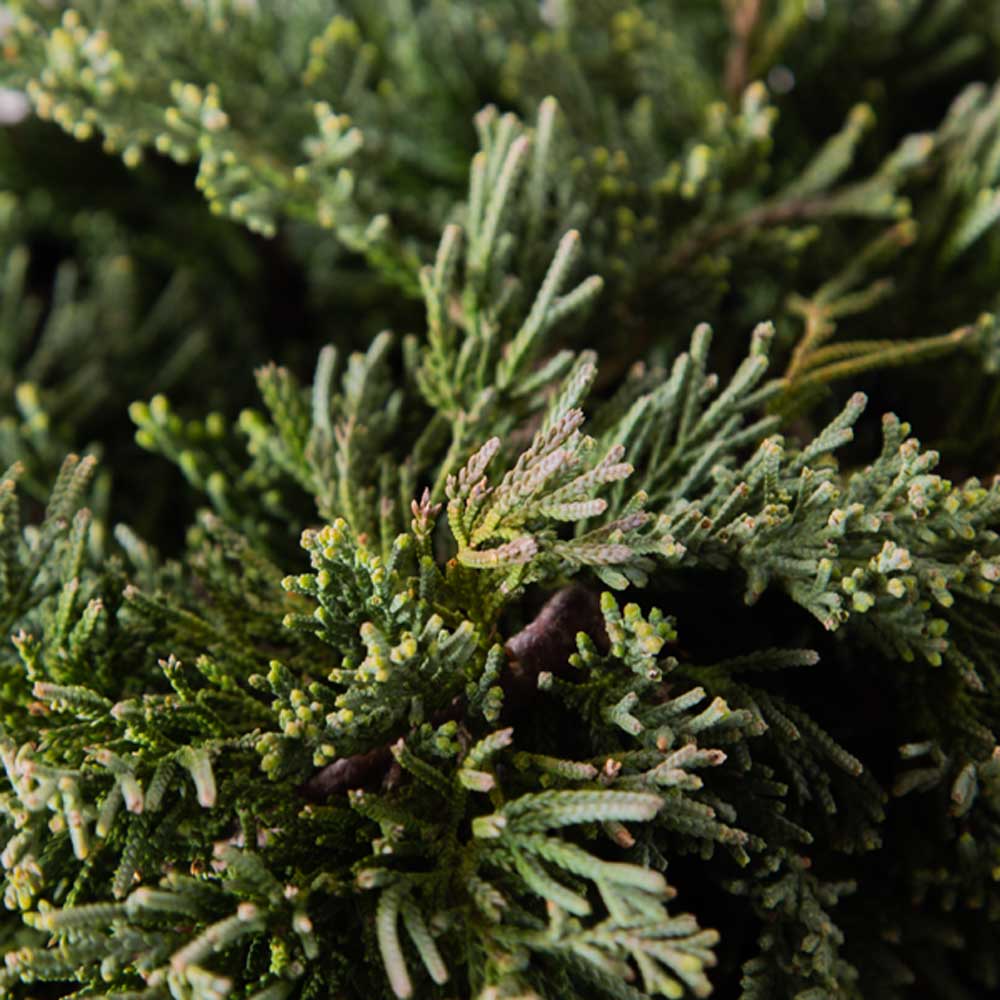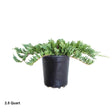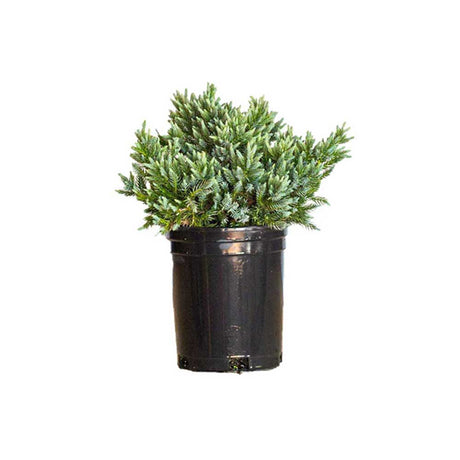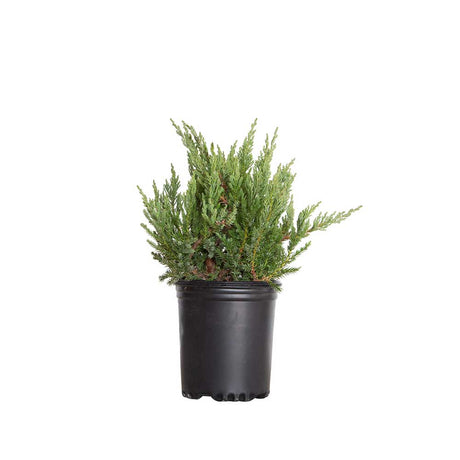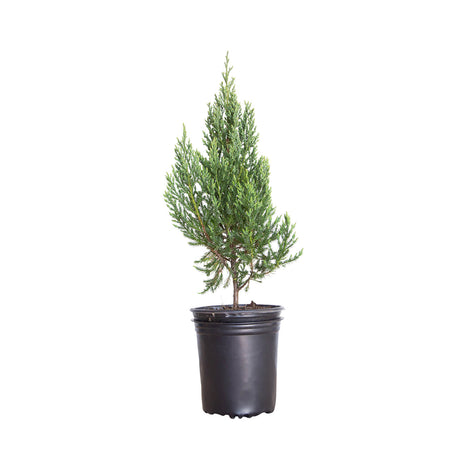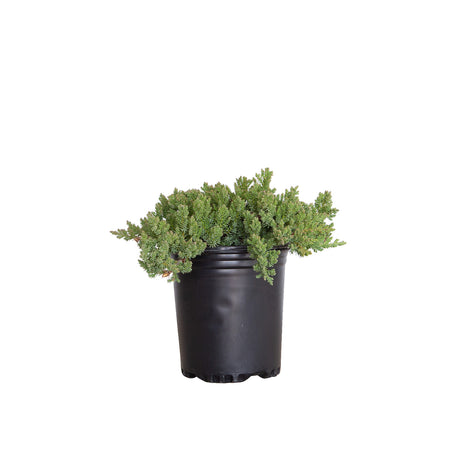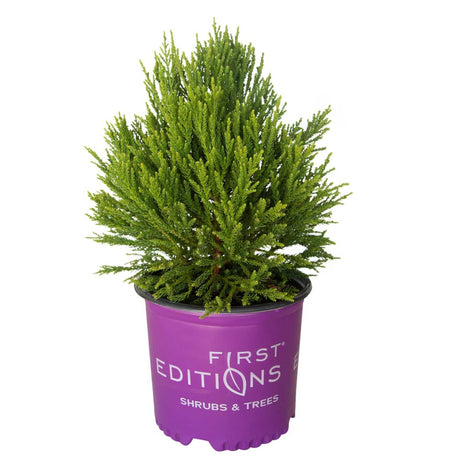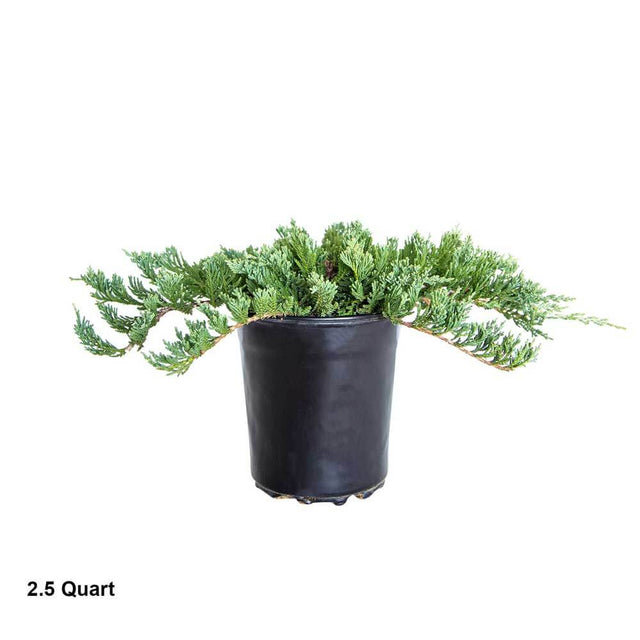Blue Rug Juniper
Blue Rug Juniper - 2.5 Quart is backordered and will ship as soon as it is back in stock.
Couldn't load pickup availability
Description
Description
The Blue Rug Juniper is a hardy evergreen ground cover variety with a low trailing habit and short needle-like silvery-blue aromatic foliage. This Juniper is commonly used as foundation plantings, around trees and shrubs, embankment plantings, beds, rock gardens, or planted along and allowed to hang over retaining walls. With an intermediate growth rate, a fully mature Blue Rug will remain less than 1 foot in height while spreading up to 8 feet wide which creates a dense mat.
Typically the Blue Rug has no issues with pests or diseases and is tolerant of air pollution and resistant to deer. This ground cover thrives when placed in 6 - 8 hours of direct sunlight daily in USDA zones 3a - 9b. Until the plant has matured, its soil should remain evenly moist but must remain well draining. Soggy soil can cause damage to the plant.
Pruning Blue Rug Juniper:
Caring for the Blue Rug Juniper is relatively easy, and it is often regarded as being low maintenance. It does not require pruning unless its growth has become unruly or foliage is damaged or diseased. Light pruning can encourage growth and provide your garden with dense, healthy dark green year-round interest. If you choose to prune, do so in the late winter or early spring, removing any dead and/or damaged foliage.
Care & Use
Care & Use
Spacing Recommendations
Spacing Recommendations
-
Scientific Name
-
Hardiness Zone3, 4, 5, 6, 7, 8, 9
-
Sun ExposureFull Sun
-
Evergreen or DeciduousEvergreen
-
FeaturesHeat Tolerant, Sun Loving
-
Feature ColorBlue, Green
-
UsesBorder, Container, Groundcover
-
Water NeedsMedium
-
Bloom SeasonNone
Growing Zones : 3, 4, 5, 6, 7, 8, and 9

